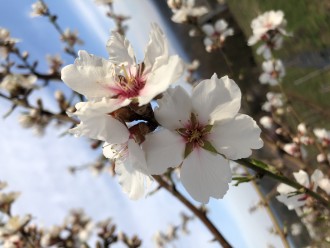Pollination
If you are a small gardener, you have already probably heard of pollination. But there is much more to know about it than just the basics. In our blog, you can read about pollinators and different kinds of pollinations and how we can attract and help pollinators.
WHAT IS POLLINATION
Pollination plays an essential role in plant reproduction. It is the delivery of pollen from plant to plant by different pollinators, such as bees, insects, birds, and even wind. Pollen is made by the male organs of a plant and carries genetic material. When transferred to a female plant and if fertilized, the production of seeds begins.
WHY IS POLLINATION IMPORTANT?
Due to global warming and the extinction of several animal species, even pollinators, our food production can be at risk. Fruits, vegetables, grains, and much more are all dependent on insect pollination. Because this is crucial for plant reproduction, different plants have developed various ways to attract these kinds of pollinators. So overall pollination is important for a healthy and balanced ecosystem.
Here is a list of fruits and vegetables that depend on insect pollination: apples, almonds, peaches, pears, plums, cherries, blueberries, vanilla, cranberries, tomatoes, kiwi, figs, coffee, strawberries, blackberries, raspberries, grapes and much more.
WHEN IS POLLINATION SEASON?
Pollination is a year-round process though it is the most visible in spring. A blooming plant is a great source of food for pollinators. That is when most allergies also occur. The earliest bloomers are trees followed by grass. In summer and fall pollination is not so vivid but it is still present. But in winter there is no pollination at all.
SELF-POLLINATION vs CROSS-POLLINATION
We are familiar with two different kinds of pollination. The differences between one and another are shown in the picture below:

POLLINATORS
We have cross-pollination and self-pollination but we also differ between abiotic and biotic pollination regarding pollinators.
Biotic pollination
Biotic pollination relies on living pollinators to move pollen from one flower to another. It represents about 80% of all pollination. Most of the living pollinators are insects but in minority, there are also mammals and birds. The insects are bees, beetles, flies, bumblebees, wasps, butterflies, and moths. They are good because they can visit many plants in a relatively short time and because they are eager to work with pollen, due to the food sources nearby.
Most known pollinators are definitely bees, which collect pollen and nectar. They are specially adapted for this job. The hairs on their legs have the purpose of pollen “baskets”. This allows them to carry larger volumes of pollen than other insects. And besides all that, they produce honey.

Abiotic pollination
In abiotic pollination, plants get all the help needed from nonliving pollinators such as wind, water, rain, or a combination of all. This is a great energy-saving way of pollination because there is no need for attracting living pollinators. The most common way of abiotic pollination is by wind (98%). Wind-pollinated plants are usually taller for more effective pollen transfer.
Some plants have adapted to both biotic and abiotic pollination, depending on environmental conditions.
HOW DO PLANTS ATTRACT POLLINATORS?
Plants have developed different ways of attracting pollinators so that they can preserve their reproduction capability. Flowers, for example, bloom in various shapes to attract diverse pollinators. Some shapes enable specific pollinators to access nectar and prevent others.
For other plants simply supplying nectar is enough to attract pollinators. Strong-scented flowers tend to be visited by beetles and flies while less-smelling flowers are visited by bees and butterflies. Besides the odor, color is also very important. Vivid and brightly colored flowers are usually more tempting for insects, while others rely on abiotic pollination.

ARE POLLINATORS IN TROUBLE? HOW CAN WE HELP?
Due to global warming and deforestation, many pollinators are losing their homes which is resulting in decreasing number of pollinators. This also means the worsening of pollination, which can lead to a great problem worldwide. But it is still time to change things for the better. You, as an individual can do a lot. Here are some tips, on how to preserve pollinators, especially bees.
- Plant
Make sure you are planting native species of plants that are not invasive. Pay special attention to plants that are full of nectar. Reduce pesticide use.
! On our website you can purchase bio stimulator NAUTA. Besides accelerated growth and rapid seed germination, Nauta’s scent attracts bees and helps with pollination. In April and May 2023 Nauta will be 10% off, but you can get it for free by buying a combination of our innovative forks with a cultivator!
Innovative garden forks + cultivator = Nauta 500g free
Innovative garden forks + cultivator + small tool set (6) = Nauta 1000g free
- Watch for pollinators
Not only it is good for you to be spending time outdoors, but it is also important for pollinators. Install birdhouses and bee hotels around your property to make sure they come back.
Birdhouses and bee hotel are available on our website and are linked down below:
- Reduce your impact
Start watching out for our planet and use public transport, buy locally grown food and reduce your consumption and more and more. These are all the ways to help pollinators survive.
If you want to know anything you are more than welcome to contact us here: Contact








.JPG)






